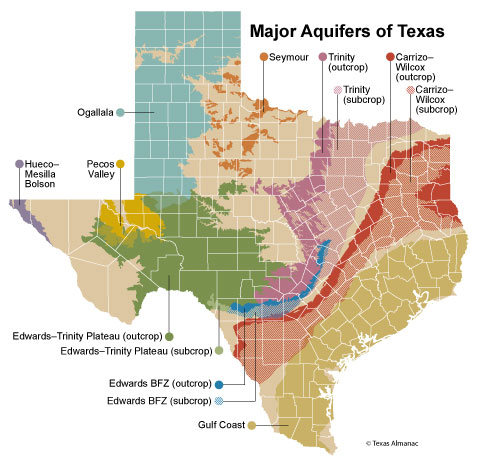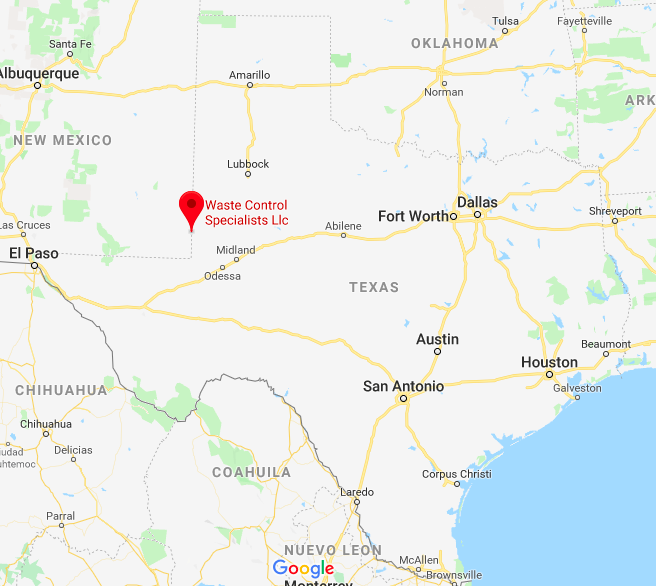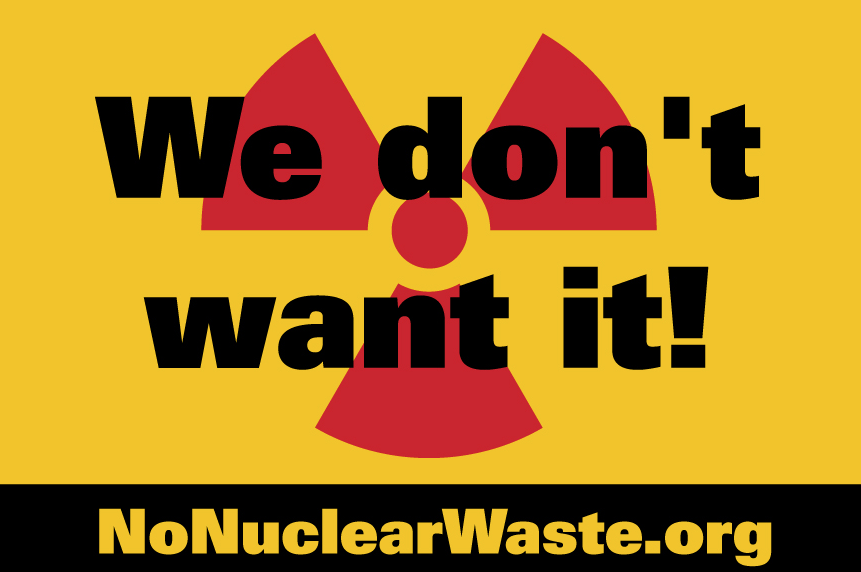
Photo courtesy of David Bowser
Texas has become infamous for its dirty fossil fuel industry, but it has also been the home to nuclear power for decades. Texas alone has four reactors and in 2016, 33.8% of the state’s electricity that does not have direct carbon dioxide emissions came from nuclear energy. However, just because nuclear power has a smaller impact on air quality compared to fossil fuels, that does not mean that it is a clean source of energy. Nuclear power and the waste it produces has created local opposition from nearby communities for as long as it has been here. With no permanent storage facility after the proposed site at Yucca Mountain was placed on hold, companies are continuing to search for what they call “interim” storage facilities. A search that brought them to Andrews County, Texas.
Andrews County is located in West Texas just a few miles east the Texas-New Mexico border and has a long history with radioactive waste. The county has been the home for only one of four low-level radioactive waste facilities in the country, following the federal government’s recommendation that states work together to find sustainable solutions to the disposal of radioactive waste. Texas entered into an agreement with Vermont in the early nineties and formed the Texas Low-Level Radioactive Waste Disposal Compact Commission. This commission allowed for waste from both states to be stored in West Texas, and eventually allowed imports from other states, due in large part to action by the Texas Legislature to allow up to 30% of the capacity to be for imported waste. The storage facility in Texas is run by Waste Control Specialists (WCS) and has a capacity of 2.3 million cubic feet of material that, according to the Texas Commission on Environmental Quality (TCEQ), will need to be monitored for at least one thousand years.
Low-level radioactive waste can include anything from disposed medical equipment and protective equipment used around radiation to building materials used in the construction of nuclear facilities according to the United States National Regulatory Commission (NRC). In Texas, only 3.9% of low-level waste was from academic, medical, and industrial waste, and up to 90% of waste generated in Texas is from nuclear reactors. Just because this waste is deemed “low-level” does not mean it is not dangerous in high concentrations.
The permit for the current low-level facility was approved even after all TCEQ engineers and geologists assigned to review Waste Control Specialists' permit application, recommended its denial. The Sierra Club sought a contested case hearing because of our concerns, but were denied by the TCEQ, and ultimately by a Texas Court of Appeals.
Now, even after Texas hastily rushed into the agreement back in 2012, WCS hopes to expand their current location in West Texas. They are seeking a permit that would allow the facility to accept not only the current low-level radioactive waste, but some 40,000 tons of high-level radioactive waste from the entire country. Yes, you heard that right. High-level waste. That means the fuel rods from nuclear power plants could be coming through on a highway near you, putting water sources, security, and the health and safety of residents on any of those transportation routes, as well as the residents in Andrews County, at risk.


The proposed site was chosen because of the dry nature of West Texas as well as its relatively quiet seismic activity. Nonetheless, there is, in fact, significant geologic activity, including earthquakes, sinkholes, and frequent tremors. The area is also home to thousands of oil and gas wells and all the related activity, and the oil industry itself is concerned about mixing radioactive waste activities with oil drilling activities.
In addition, there is still uncertainty about the hydrogeology under the site. Fissures and fractures are common below the surface, and a detailed understanding of the exact pathways that connect the local geology and water bodies to the larger aquifers in the area - including the Dockum and the Ogallala - are still not well understood.
According to the Centers for Disease Control and Prevention, exposure to radiation could increase the likelihood of developing cancer later in life, affect fertility in women, and harm children. Any potential leak or spill would be devastating to the environment and human health, not to mention cost hundreds of millions of dollars to clean up.
In addition to the possibility of contamination, this site is masquerading as an interim location for waste with no promise of leaving any time soon. In the United States, there are currently no permanent locations to store high-level radioactive waste. This interim location that WCS seeks to gain could be in Texas for generations, until the federal government determines a safe location for permanent storage. This means that for up to 100 years, high-level radioactive waste could be trucked through major cities like Dallas, Houston, and San Antonio, on its way to Andrews County, increasing the risk for accidents in transport and jeopardizing the safety of major cities and their first responders.
The risk to communities where waste will be stored and the cities it will have to travel through is too great to be ignored. WCS and nuclear power generators claim that the storage casks are stable and the risk of accidents is low. They are equating the possibility of catastrophic and devastating contamination to a mere improbable statistic, rather than considering the lives and communities that would be scarred should the unthinkable happen.
Nuclear power facilities pay taxes to the federal government for the purpose of locating, building, and maintaining a facility capable of permanently storing high-level radioactive waste. The failure of the federal government to determine an acceptable location does not justify the building of interim facilities in communities with little political power. There is no justified reason to put these cities at risk when the waste can be stored safely in dry casks or pools on site until a permanent solution is found.
The license permit for WCS to build an interim high-level waste facility would require Texas to enter into a long term relationship with high-level radioactive waste, forcing Texans to take on the risks, burdens, and all the uncertainty that comes along with it.
What Happens Next
The fight is not over. Sierra Club has filed a request to be admitted as an official intervenor at hearings next month against the proposed license and will be making its case before a panel of three judges from the Atomic Safety and Licensing Board next month.
In Midland on July 10 and July 11, at the Midland County Courthouse beginning at 9 AM, our lawyer representing the Sierra Club will argue before the Atomic Safety and Licensing Board that we should have standing and that our contentions should be admitted for an evidentiary hearing. Over 46,000 people submitted comments and now is the time to show up to bear witness and prove that there is strong opposition to the interim high-level waste facility. If you can go to Midland, wear red and show the federal government that storing waste at an interim site is not in Texas’s best interests!
Meeting Details:
For more information about rad waste in Texas please visit http://nonuclearwasteaqui.org. If you are able to show up at the hearing in Midland, please contact our Conservation Director, Cyrus Reed, at cyrus.reed@sierraclub.org.
